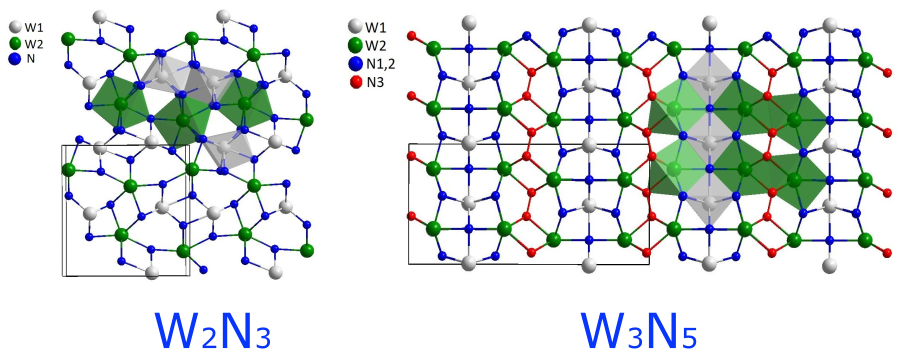5d transition metals usually exhibit high incompressibility due to their large electron density, with osmium reported to be the most incompressible element in the periodic table. However, the hardness of these 5d transition metals is typically below 5 GPa due to a low shear modulus. By introducing short, directional covalent bonds, such as those found in metal nitrides, it is possible to not only maintain their high incompressibility but also significantly increase their shear modulus, and thereby their hardness, and even their superconducting transition temperature.
Recently, researchers from Centre for Science at Extreme Conditions (CSEC) at the University of Edinburgh have successfully synthesized two novel tungsten nitride materials: W2N3 and W3N5. The formation of W2N3 and W3N5 occurred under extreme conditions achieved in laser-heated diamond anvil high-pressure cells, namely at pressures of 30 GPa and 55 GPa and temperatures above 2000 K, respectively. The crystal structure and stoichiometry of the novel solids were determined using synchrotron-based single-crystal X-ray diffraction of the polycrystalline samples. Both compounds were found to be composed of densely packed incompressible WN7 polyhedra, with the directional W-N covalent bonds being responsible for the exceptional mechanical properties of these new tungsten nitrides compared to pure tungsten. Additionally, the single-bonded N-N dimer of W3N5 is thought to further enhance these properties.
Indeed, W2N3 and W3N5 were determined to feature a bulk modulus of 380 GPa and 406 GPa, respectively. Their hardness was calculated to be of 30 GPa and 34 GPa, while their superconducting transition temperatures are 11.6 K and 9.4 K, respectively. This compares favourably to pure tungsten, which exhibits a bulk modulus of 300 GPa, a hardness of 3.4 GPa, and a superconducting transition temperature of 0.011 K. The discovery of these materials demonstrates the effectiveness of exploiting high pressure and high temperature for the synthesis of compounds, providing a potential synthetic pathway towards new multipurpose functional materials.
